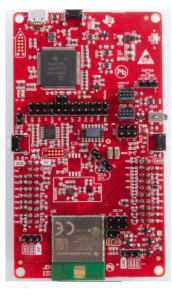This solution leverages the SimpleLink Wi-Fi MCU for secure connectivity, predictive maintenance, and seamless IoT integration, addressing the challenges of grid modernization.

The increasing power demand necessitates modernization of the electric grid to ensure enhanced reliability, minimize downtime, and meet future energy needs.
Predictive maintenance is a critical component of this transformation, enabling utilities and substations to monitor the health of essential equipment and proactively address potential failures.
The move toward digital grids is marked by efforts to integrate localized sensors that collect data processed centrally via data concentrators. A significant challenge in this transition is implementing secure, reliable wireless connectivity that ensures interoperability.
Security is critical to safeguard systems against unauthorized access or control. Additionally, standalone systems with miniature sensors must achieve power efficiency as they become more localized and energy-conscious.
This reference designTIDA-010007 by Texas Instruments (TI) addresses these challenges by integrating Wi-Fi® capabilities for asset monitoring in grid equipment, leveraging the CC3220 device from the SimpleLink Wi-Fi and IoT portfolio.
This single-chip wireless MCU combines a network processor and an applications processor, facilitating Wi-Fi network setup, data transfer, and power optimization. The design supports the transmission of control signals, status updates, settings, and firmware updates, including over-the-air (OTA) functionality.
Power optimization is achieved through modes such as always connected, intermittently connected, and hibernate mode.
The key features of this design include integrated Wi-Fi connectivity with a network and applications processor (ARM Cortex-M4) tailored for IoT applications. The single system-on-chip (SoC) design is optimized for compactness and performance, with Wi-Fi Alliance CERTIFIED compliance and easy provisioning through SmartConfig and application point provisioning.
The system supports both wired and battery operations with low power consumption levels. For instance, always connected mode consumes less than 700 μA (beacon only), intermittently connected mode consumes less than 3 mA (5 s interval), and hibernate mode consumes less than 10 μA.
Advanced security features such as a 128-bit unique device ID, secure boot, and internal HTTPS server ensure robust protection.
The CC3220x device, part of the SimpleLink MCU platform, simplifies IoT implementation with dual execution environments for user applications and network processing.
Complementary components like the OPA4342 signal conditioner, TPS62162 step-down converter, and TMP116 temperature sensor enhance the system’s efficiency, precision, and compactness.
This design is ideal for residential circuit breakers, renewable energy systems (e.g., PV inverters and EV chargers), building automation, and factory automation equipment.
It provides a streamlined, energy-efficient solution for advancing grid connectivity and meeting future power challenges.
TI has tested this reference design. It comes with a bill of materials (BOM), schematics, assembly drawing, printed circuit board (PCB) layout, and more. The company’s website has additional data about the reference design. To read more about this reference design, click here.







